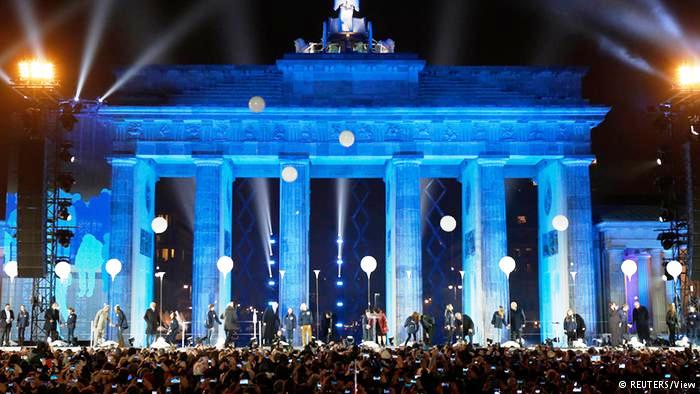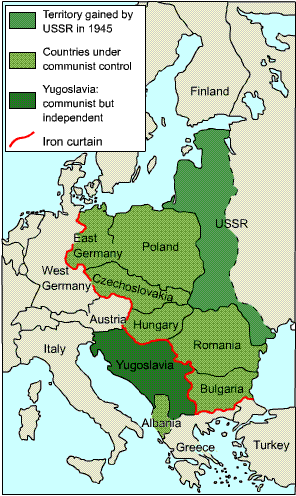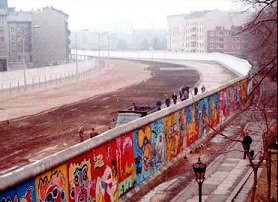“The king’s heart is in the hand of the Lord; as the rivers of water, He turns it wherever He pleases.” Prov. 21:2
On November 9, 2014 Germany celebrated a major historic event: the 25th anniversary of the fall of the Berlin Wall which took place on November 9, 1989. It marked the beginning of the German reunification after the country had been partitioned by World War II’s winning powers, and the Soviet Union, in 1961, had erected the Berlin Wall, dividing East Berlin from West Berlin.
On the day of celebration, hundred of thousands of Berliners, dignitaries and visitors from around the world gathered around the city’s iconic Brandenburg Gate to remember the moment which became the symbol of the end of the Cold War and the beginning of the end of the oppressive communist era of the Soviet Union. German Chancellor Angela Merkel said the fall of the Berlin Wall sends “a message of hope and that dreams can come true, nothing has to stay as it is, even if it’s difficult. It is a message of confidence in our ability to tear down walls today and in future, walls of dictatorship, violence, ideology and hostility.”
Under a spectacular project named Lichtgrenze 2014 (Border of Light), 8,000 helium balloons were installed along a nine-mile stretch of path where the Berlin Wall once stood, separating East Berlin from West Berlin. A lit-up sky resounded with Beethoven’s Ninth Symphony “Ode to Joy” played by the Berlin State Orchestra. Later, the balloons were released one by one – each bearing a message of peace and unity. The release of the luminous balloons was accompanied by a brilliant display of fireworks which bathed the Brandenburg Gate in an array of multicolored lights. Many of the people also visited he East Side Gallery where 1.6 miles of the wall is still standing.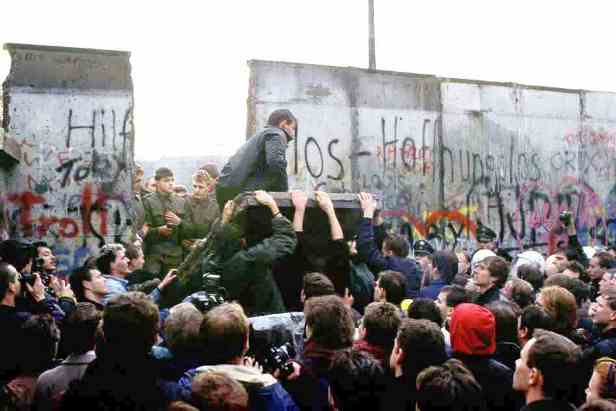
A BRIEF HISTORIC BACKGROUND
Toward the end of World War I (1914-1918), the 1917 Bolshevik October Revolution in Russia heralded the overthrow of the Czar dynasty and set in place a new government. It was ruled by a state controlled, one party Bolshevik leadership who adhered to the Marxist communist ideology. In 1922, in union with Ukraine, Belorussia, and part of Caucasia, the Soviet Union (USSR) was formed which was legitimized by the British Empire in 1924, then later – the rest of the world.
In 1941, shortly after the outbreak of World War II, Hitler’s Nazi troops invaded the USSR, and the Soviet Union entered the war on the Allied side. The Soviets took control of several countries ceded to it by Germany, including the Baltic nations, Poland, Eastern Romania, and Eastern Finland. During the end of the war, the USSR began the permanent occupation of the countries where they were victors over Nazi Germany: Poland, Czechoslovakia, Hungary, Romania, Bulgaria, and to some extent, Yugoslavia. These countries lost their sovereignty, were annexed into the Soviet Union, later referred to as Soviet Satellite States.
In 1945, Germany surrendered to the victors, the Allied forces of Britain, France, the U.S., and the Soviet Union— World War II had come to an end! To ensure that Germany would never again rise to power and go to war, the four Allied powers decided to divide Germany into four occupation zones for administrative purposes, which, in August, 1945, was ratified at the Potsdam Conference
The joint governing of Germany operated for four years, but it had become increasingly evident that the cooperation between the countries did not function well. In May 1949, the three Western Allied powers withdrew. The western occupation zones ceased to exist, and the three zones merged into the formation of the Federal Republic of Germany (FRD) – West Germany emerged as a capitalist, free democratic society. The Soviets followed suit, but by very different means. They took full control of their zone, forced the Marxist-Lenin ideology system onto the people and annexed that part of Germany into the Soviet Union as a satellite state. Controlled by the central Kremlin government in Moscow, it was, in October 1949, established as the German Democratic Republic (GDR), known as East Germany.
THE CITY OF BERLIN AFTER 1945
The city of Berlin was located deep within the Soviet zone, app. 100 miles from the border of the nearest Western zone. Due to its symbolic importance as the nation’s capital and seat of the former Nazi government, Berlin was not considered to be part of the Soviet zone, so, in 1945, it was jointly occupied by the Allied powers and subdivided into four sectors. Later, the three Western zones merged and became West Berlin, while the Soviet-occupied part of the city became East Berlin.
In the following years, West Germany and West Berlin began to prosper, whereas the Soviet-controlled parts did not progress. Before the wall was built, the Berliners could freely move between East and West Berlin, but during the next decade, an increasing number of Germans, most often the best and the brightest, began fleeing from East Germany into West Berlin and West Germany, seeking freedom and opportunities. Throughout the fifties, the stream of refugees became a flood; in June 1961, 19,000 people left East Germany through West Berlin, in July 30,000, and during the first eleven days on August, 16,000 crossed into West Berlin.
To stop this bleeding, The Soviet regime made a decision to block East Berlin from West Berlin. On August 13, 1961, the Berlin wall was erected. Built by concrete reinforcement and barbwire across the city, separating the East from the West, people were all of a sudden permanently separated from family members, jobs, and life’s normal social interaction. This halted the emigration, except for a few who risked their lives fleeing. It is estimated that between 1961-1989, app. 5,000 escaped and app. 200 died in the effort.
THE FALL OF THE BERLIN WALL
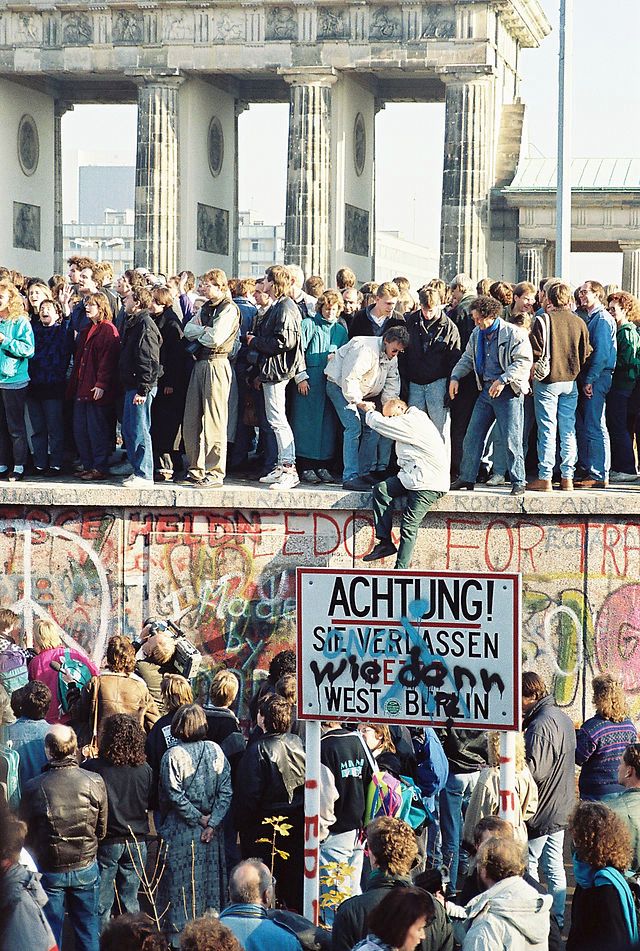 In the late 1980-ties, a gradual thaw began in the Cold War relationship between the two world superpowers, the United States and the USSR, which had a positive effect on the people of the East Bloc. On November 9, 1989, an East Berlin Communist party member announced the citizens of the GDR were allowed to cross the East-West borders. In response, thousands gathered during the day on both sides of the wall, demanding the gates to be opened. When, finally, at midnight, the authorities decided to open them, the crowd poured through the checkpoints. Euphoria and ecstatic joy flooded the crowds as family and friends, who had been separated since 1961, were reunited!
In the late 1980-ties, a gradual thaw began in the Cold War relationship between the two world superpowers, the United States and the USSR, which had a positive effect on the people of the East Bloc. On November 9, 1989, an East Berlin Communist party member announced the citizens of the GDR were allowed to cross the East-West borders. In response, thousands gathered during the day on both sides of the wall, demanding the gates to be opened. When, finally, at midnight, the authorities decided to open them, the crowd poured through the checkpoints. Euphoria and ecstatic joy flooded the crowds as family and friends, who had been separated since 1961, were reunited!
That weekend, more than two million people from East Berlin visited West Berlin and participated in a celebration that was called, “the greatest street party in the history of the world.” People came running to the wall with sledgehammers and picks; later they were assisted by bulldozer and cranes which pulled down section after section. Soon, the wall was gone! In 1990, Germany was officially reunited. The collapse of the Berlin wall became the symbol of triumph of freedom & liberty!
FROM R.K.’s CORNER
 I remember that day very well. My husband, Steve and I were visiting a number of friends and ministry partners in several countries in Europe, and were driving by car from Nürnberg to München (Munich), when I turned on the radio. “The Berlin Wall has fallen”, the newscaster announced. We were stunned! How was that possible—how did it happen? Since 1981, when I joined an East European Mission in West Germany, and later, after The Bridge, in 1983, was established in the States, I had regularly prayed with fellow believers on both continents that the Lord would break the Iron Curtain and the Gospel be freely shared among the peoples oppressed by the communist regimes. However—when it did take place, we were as surprised as everybody else! In 1982, I had traveled through “Checkpoint Charlie” (the term for the most popular entrance gate between West and East Berlin) by car in which was hidden Bibles and Christian literature to be clandestinely delivered to East Berlin believers. I had experienced first hand the severe control apparatus at the checkpoint – the border guards with machine guns, killer dogs, floodlights, and the open area in the no-man’s land which we were told were full of landmines – “killer zone”, they called it. It was unfathomable that such a bastion of power of control suddenly would crumble – and that without a shot being fired, and without a charismatic leader being at the helm of the event! But it did! We contribute that to a demonstration of our God’s sovereign intervention in the history of mankind in answering the cry of the people for freedom!
I remember that day very well. My husband, Steve and I were visiting a number of friends and ministry partners in several countries in Europe, and were driving by car from Nürnberg to München (Munich), when I turned on the radio. “The Berlin Wall has fallen”, the newscaster announced. We were stunned! How was that possible—how did it happen? Since 1981, when I joined an East European Mission in West Germany, and later, after The Bridge, in 1983, was established in the States, I had regularly prayed with fellow believers on both continents that the Lord would break the Iron Curtain and the Gospel be freely shared among the peoples oppressed by the communist regimes. However—when it did take place, we were as surprised as everybody else! In 1982, I had traveled through “Checkpoint Charlie” (the term for the most popular entrance gate between West and East Berlin) by car in which was hidden Bibles and Christian literature to be clandestinely delivered to East Berlin believers. I had experienced first hand the severe control apparatus at the checkpoint – the border guards with machine guns, killer dogs, floodlights, and the open area in the no-man’s land which we were told were full of landmines – “killer zone”, they called it. It was unfathomable that such a bastion of power of control suddenly would crumble – and that without a shot being fired, and without a charismatic leader being at the helm of the event! But it did! We contribute that to a demonstration of our God’s sovereign intervention in the history of mankind in answering the cry of the people for freedom!
In this issue, I am giving a brief overview of the main historic events behind the rise of the Soviet Union, the 1961 erection of the Berlin Wall, and its 1989 destruction, culminating in the 1991 collapse of the Soviet Union’s Iron Curtain. It is a reminder of the truth that God has created man for freedom and that the fight and price for freedom is costly. The United States which was founded on a Biblical-based Constitution which established the God-given right Presently, in the Middle East, there are walls being erected against freedom. Those walls are not physical, but ideological! May those who are searching and seeking for freedom, find Him who declares, “When the Son makes you free, you become free, indeed.” John 8:36.
As you gather with friends and family around the Thanksgiving table and thank God for His blessings for our liberty and prosperity, please take a moment and pray for the millions who are suffering under oppressive regimes, and the approx. 100 million Christians – persecuted and tortured, simply because they express their faith in Jesus Christ!

